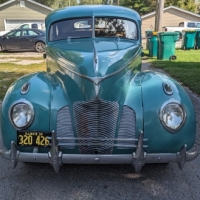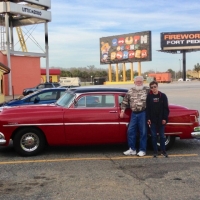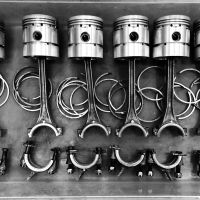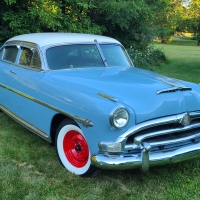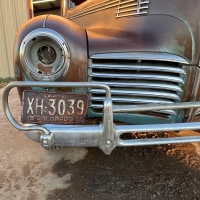Vapor Lock
Comments
-
Thank you Ken U Tx.0
-
Would anyone happen to have a picture they could post of one plumed and installed.? Thanks John0
-
Here's an old discussion where I posted what I did to take care of vapor lock. The photos were missing in the old thread so I went back and added them back in for this discussion.
Hope this helps, John
Having read all of tips on this forum to eliminate vapor lock I took to the garage to see what I could do. Thanks to everyone who has taken time to post their efforts pertaining to eliminating vapor lock... I learned a lot.
I had replaced the original fuel sending unit years ago with a late 50s Ford reproduction sending unit (they have the same bolt pattern as Hudson). I fabricated a through the tank fitting using a 3/8 extension for a lamp socket (yep, the same thing you probably have in your living room), and a 90 degree brass fitting and brazed the two together. I drilled a hole through the sending unit mounting plate and cut rubber gaskets out of an old inner tube, added brass washers and nuts. I used a NAPA 3054 fuel filter which has a fuel return line stubbed off already, and a .025 restrictor in the return line which I ordered from McMaster-Carr.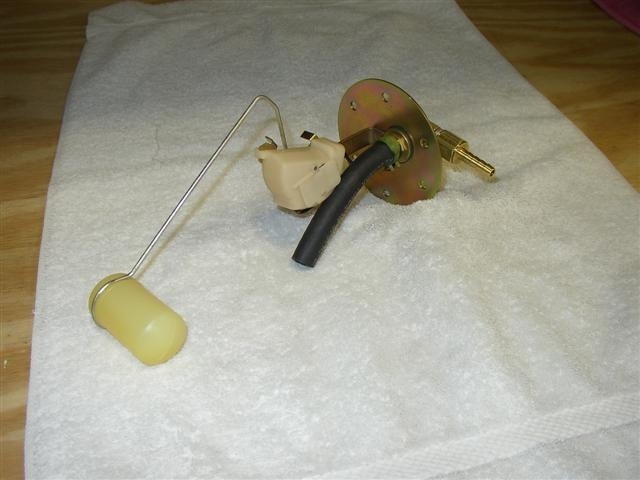
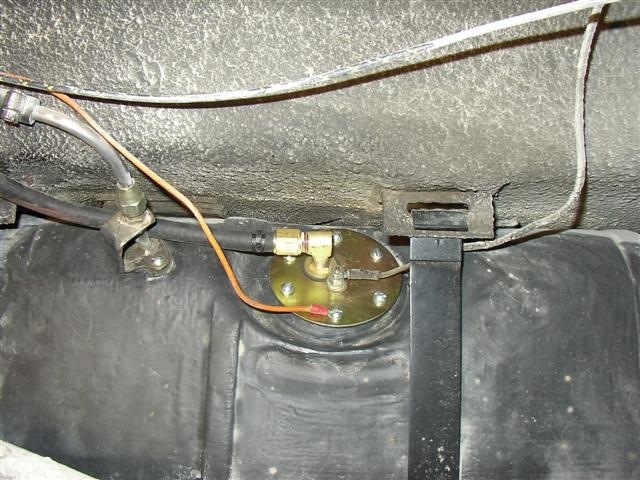
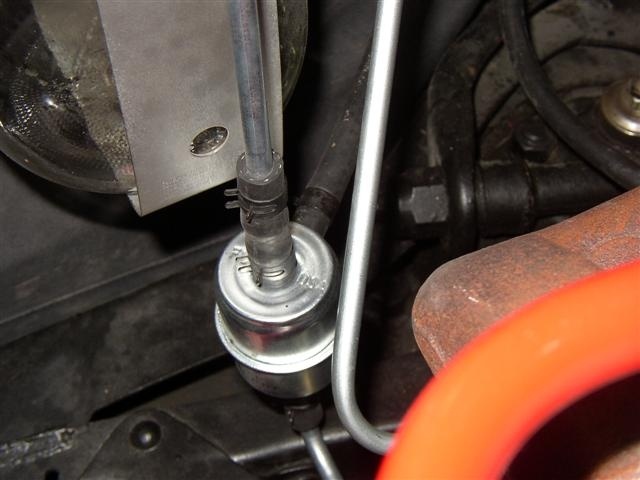
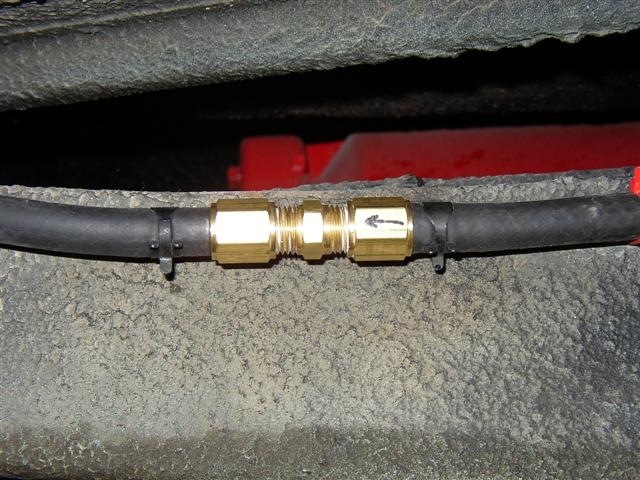
BTW... It Works! I wonder if I'll get Walt's blessing though? I used rubber fuel line for the return.
I had the tank sealed by Tank-Renu years ago, I also run an electric fuel pump, and add 4oz of Marvel Mystery Oil to every 10 gallons of premium fuel... It all helps.
As a side note this procedure will not work on the original sending units as the guts (the mechanicals) are attached to the mounting plate.
John
(from Walt)
Like I tell all, it doesn't matter where the return is as long as you have gas cycling you will not vapor lock. On using rubber lines, be careful that no part hangs lower than the chassis. You only need to ad Marvel oil every third tank full. Make sure you have a filter before the electric fuel pump, that is why owners are having trouble with their pumps. Neat job, Walt.
0 -
Val, the electric fuel pump is always a good "rescue" from vapor lock, and I think it's a fine idea. That said, I installed one on my '37 back in the 1970's, and in the 1980's I got adventurous and went back to the mechanical pump. I've never had vapor lock since then.The secret is to try to prevent vapor lock. Possibly your engine is inherently hotter than mine because it's a newer one, so maybe this doesn't work, but: is your carburetor or are your fuel lines near a source of heat? Years ago I wrapped my metal fuel line (from pump to carb) in asbestos and wrapped the exhaust pipe with asbestos as well, in the area near the carburetor. (Nowadays there is a substitute for asbestos insulation, of course.)Also: is your carburetor sufficiently heat-insulated from the manifold below it? I have four fiber gaskets, then a metal heat shield, then four more gaskets, between my carburetor and the manifold. A total of eight gaskets. So many gaskets, in fact, that I had to replace the "stock" threaded mounting studs with longer ones!If you have something besides a splasher six, your engine may just run hotter, and my ideas won't help you. But you might just take a look at your engine and see if any part of the fuel system is near some heat-producing part of the engine, and if so you might think of some ways to shield it from that heat.0
-
Thanks to all who have replied. Jon B I have a heat shield between inake manifold and carb. I have the original 212 engine. All is stock in my car. I also use Marvel Mystery Oil as John said. I have seen heat resistant tape made for fuel and hydraulic lines. I may add that to the fuel line. I can wrap the exhaust too but not the manifold. I am hesitant to add an electric fuel pump as I would rather not have switches under the dash that don't belong there0
-
Val,
I had my carburetors rebuilt by Daytona Parts Co. when I was sorting out my vapor lock issue. One bit of advice they gave me was to use the lowest octane gas I can find at the pump. High octane gas causes the engine to run hotter, your engine will run cooler using lower octane gas. We think we're doing our engine a favor by running premium gas, in their opinion, not. (don't shoot the messenger)
Hope this helps,
John Forkner
0 -
Thanks John, The Good Doctor Doug rebuilt my carb last year. So I have no issue with it and I do run the 87 octane with marvel mystery oil. I have considered using the hyper cool additive in the radiator as well as wrapping the fuel line (pump to carb)in a heat resistant tape and possibily the exhaust where I can in the engine bay. I like the idea of a return line also R. Talent has told me about this. If I do all of the above I should be ok?0
-
Something that helps also is to use 'ethanol free' fuel if you can.
There are several Pacific Pride and CFN locations that carry it.
https://www.pure-gas.org/
Jeff0 -
These are really nice fuel filters used on Chevy 409s and Studebaker R1/R2 series cars in '63 - '67.
https://www.show-cars.com/cgi-bin/commerce.cgi?preadd=action&key=7484
0 -
This insulating sleeve has worked well for my '51 and and friend's '49:Heatshield Products (204011) 3/8" ID x 10' Hot Rod Sleeve RollJust slip it over the metal fuel line between the fuel pump and the carburetor (it will stretch over the fittings if you are patient). It will also stretch over the flexible fuel line going to the fuel pump. I slipped them over the rubber vacuum lines near the manifold as well.
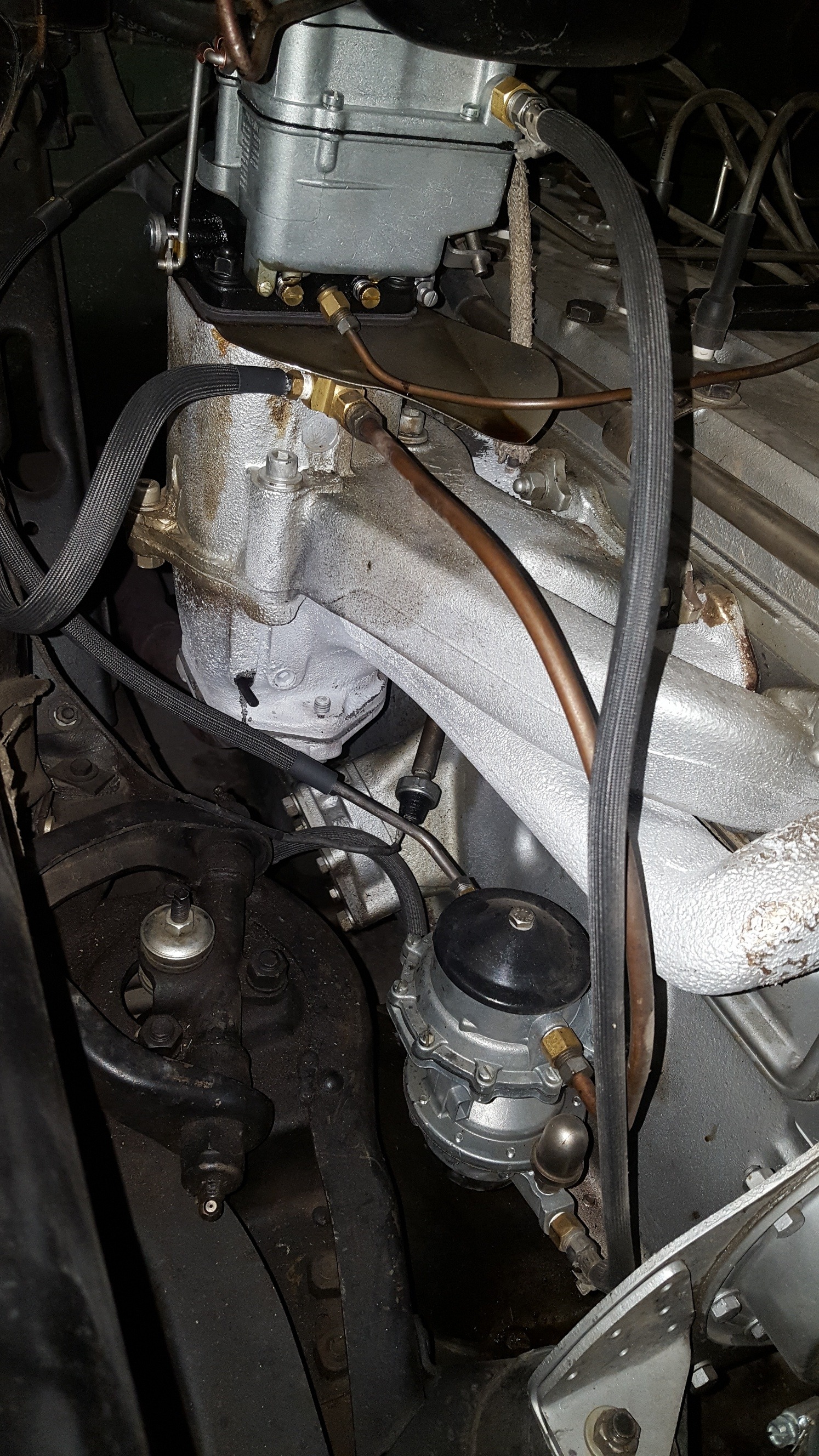
0 -
During the removal & restoration of my intake & exhaust manifolds, I discovered the climate damper (or whatever it’s called) inside of my 37’s exhaust was rusted stuck in the closed position. If one has a similar setup I’ve been told this can lead to vapor lock because one is sending half the exhaust thru the intake manifold & overheating the intake manifold and ultimatly the carb, leading to vapor lock. If working correctly the blocking “door or flap” opens up when the engine warms up & thus not forcing too much exhaust through the intake.
Worth taking a look look at if you have anything similar, I know I’m extremely glad I pulled the manifolds off & discovered it so I can permanently fix it!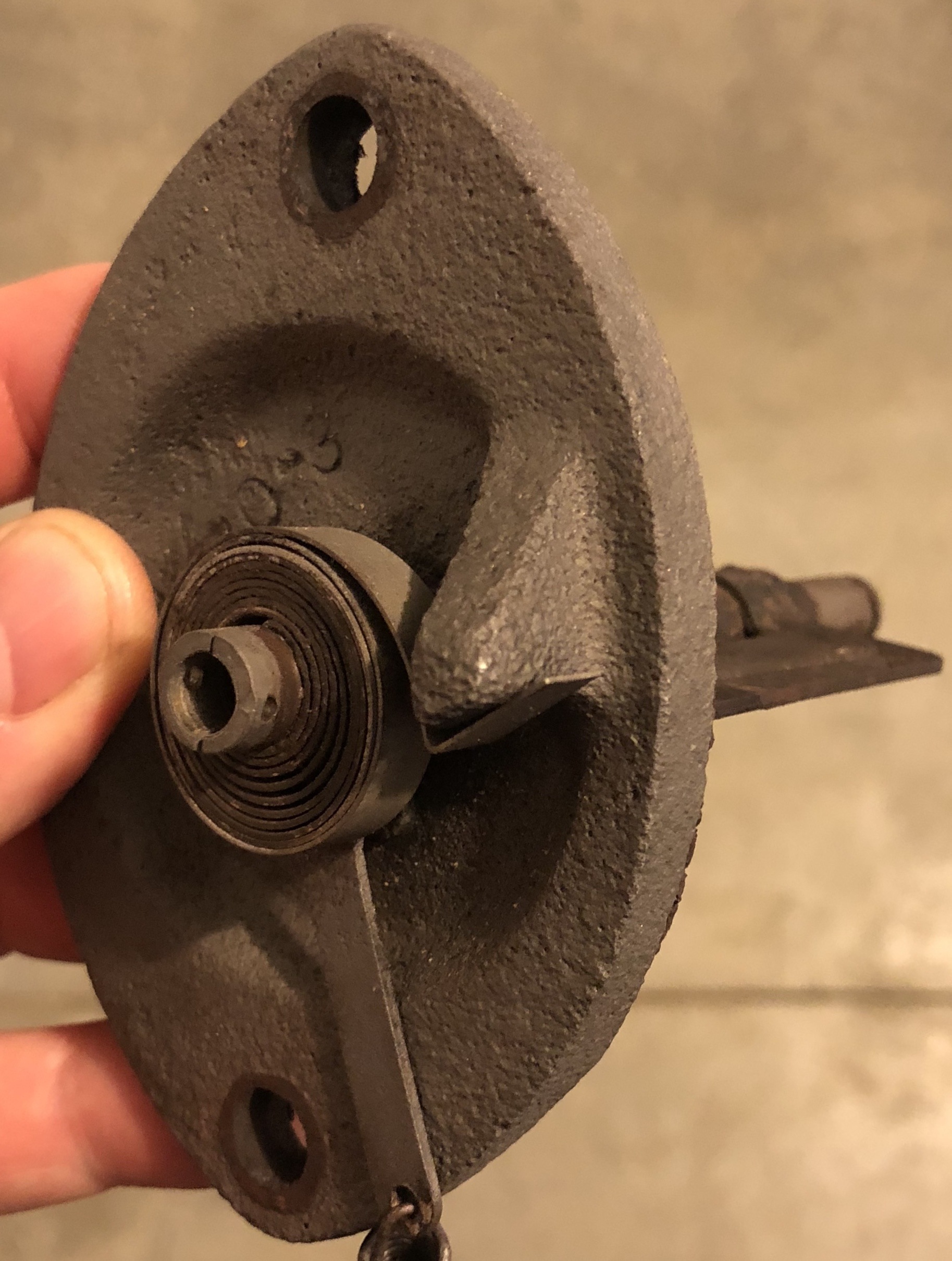 0
0 -
Has anyone tried to "block" close off the air passage between the exhaust manifold and intake on a twin H system?
On mine the spring operated deflector has been removed.
0 -
Dave, I was wondering that exact thing today, hopefully there’s been experience with it. How did you go about removing the deflector? Did you leave the rod & just cut the deflector flap off the rod or did you do something else?0
-
Yes, but i run full length clifford headers on mine. Clifford performance used to sell a 1/4" steel plate to bolt to the bottom of the intake manifold.0
-
I removed the deflector and plugged the holes in the manifold with bolts and nuts installed from the inside out.
making a stainless steel plate to block the exhaust passage makes sense with an exhaust header. It is a bit more complicated with the stock exhaust manifold,...hoping some one has tried this with success.
I may have to resort to running a header in the future, in the meantime I kinda like the stock exhaust. Its just that the outer chamber of my intake is eroding through.
0 -
What position is the weight on the deflector rod when the butterfly is in the open position? I want to tie it in the position when valve is open to avoid dismantling the manifold to take a look.
0 -
Tie the weight towards the engine block to have it in the open position.0
-
Thanks for that Geoff, I really enjoy your WTN contributions!
0 -
John Forkner aka Onerare39 I sent you a PM.0
-
I took the heat riser out of my twin H manifold before I put it on the engine, was a major project involving a cutting torch and a welder, be hard to do it when in the car. an easy and cheap heat shield is wrapping aluminum foil around the gas line where it is near a heat source. doesn't look so hot , but you can find out where to put a better looking one.
0 -
How does high octane gas run hotter? All octane does is resist detonation so you can run higher compression ratios thus producing more power. The “higher octane” equals a hotter burning mixture in any given engine does not compute.Regards, Tom0
-
High octane fuel will run hotter in a low compression motor, (Like a 1928 Hudson) because it burns for longer, resulting in burnt valves and very hot exhaust.0
-
Geoff, I respect your knowledge and field experience a GREAT deal.It would be helpful to me if you could point me in the direction of supporting documentation on this point. My years of field work and schooling, until your post, have indicated octane delays the onset of combustion, but does not change the speed of flame propagation once the mixture is ignited.Thank you.With regards, Tom0
-
My understanding is that the higher the octane, the less the tendency for the mixture to explode,(as you describe delays the onset of combustion) but instead burn steadily and follow the piston as it moves down. this effectively slows the burn rate, so that power is transferred to the piston top all the way down. If the compression is low, the flame retardation is extended, hence more heat ejected out the exhaust.0
-
I will continue to look, but thus far, with the exception of one anecdotal Motor Trend story from years ago, I cannot find any references to octane levels changing the speed of flame propagation in a combustible mixture once ignited. All properly footnoted technical pieces I found do not support a theory of differences in flame propagation speed to differences in octane level. I will continue to look however.
regards, Tom0 -
I watched an episode of Engine Masters a couple of weeks ago and there was no increase in power what so ever in the varying octane levels tested on a mildly built small block. The higher octane reduces the tendency to knock in certain situations, higher compression, high under hood temps, towing etc. The increased octane does not slow the combustion process. It’s still gasoline and a violent explosion. Also even running higher octane does not mean that you can advance your timing to hope for increased power. That is also mythical. Basically if your engine doesn’t require the increased octane, it’s a waste of money. Even deposits aren’t an issue even in quality low octane. A lot of this information also comes from a fuel and lubes class I had in automotive college. Hope this helps.0
Categories
- 36.9K All Categories
- 113 Hudson 1916 - 1929
- 20 Upcoming Events
- 92 Essex Super 6
- 28.6K HUDSON
- 574 "How To" - Skills, mechanical and other wise
- 995 Street Rods
- 151 American Motors
- 178 The Flathead Forum
- 49 Manuals, etc,.
- 78 Hudson 8
- 44 FORUM - Instructions and Tips on using the forum
- 2.8K CLASSIFIEDS
- 608 Vehicles
- 2.2K Parts & Pieces
- 77 Literature & Memorabilia
- Hudson 1916 - 1929 Yahoo Groups Archived Photos
